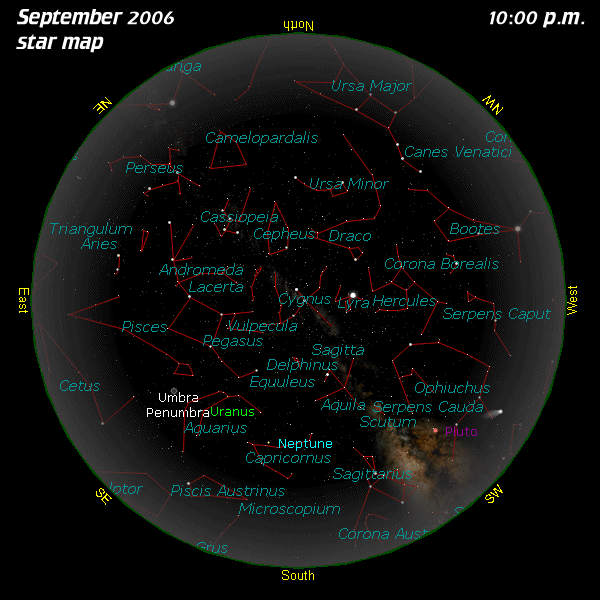



![[Moon Phases]](../moonphases/2006-09-phases.jpg) |
|---|
| Solar X-rays: Geomagnetic Field: |
 |
Current Moon Phase |
![[Full Moon at Bryce Point]](9-06-full-moon-bryce-point.jpg) |
|---|
| Bryce Point by Moonlight: There is no one around at 2:00 a.m. to spoil your photograph. This self-portrait was taken with a Canon D20 mounted on a tripod. The camera was set for a 10-second delay and triggered through an electronic shutter release. A super wide-angle, 10-20mm zoom lens was used at F/4.5 for this 30 second exposure. Notice the Big Dipper in the upper left-hand portion of the picture. The moon was one day past full. Photo by Gary A. Becker... |
![[Bryce Point by Moonlight]](9-06-full-moon-bryce-point-tropic.jpg) |
|---|
| Tropic, Utah glows under the light of a nearly full moon from Bryce Point in Bryce Canyon National Park. The lens and exposure setting were the same as the first image. Gary A. Becker photo... |
![[Bryce Lightning]](9-06-lightning-1.jpg) |
|---|
| Photographing Lightning can be dangerous, so play it safe. If lightning produces thunder within a 30 second time period, you are in danger of being struck. A telephoto lens brought the action much closer than it actually appeared. In the image above, note the ridge fire (reddish glow, along the horizon to the left) that had been set by another strike. The photo below was a single event, while the last photo was at least three events recorded as a single image. Read the article above for specific details on how to safely photograph lightning. Digital images by Gary A. Becker... |
![[Bryce Lightning]](9-06-lightning-2.jpg) |
|---|
![[Bryce Lightning]](9-06-lightning-3.jpg) |
|---|
![[Mercury Transits the Sun]](9-06-mercury-transit.gif) |
|---|
 |
